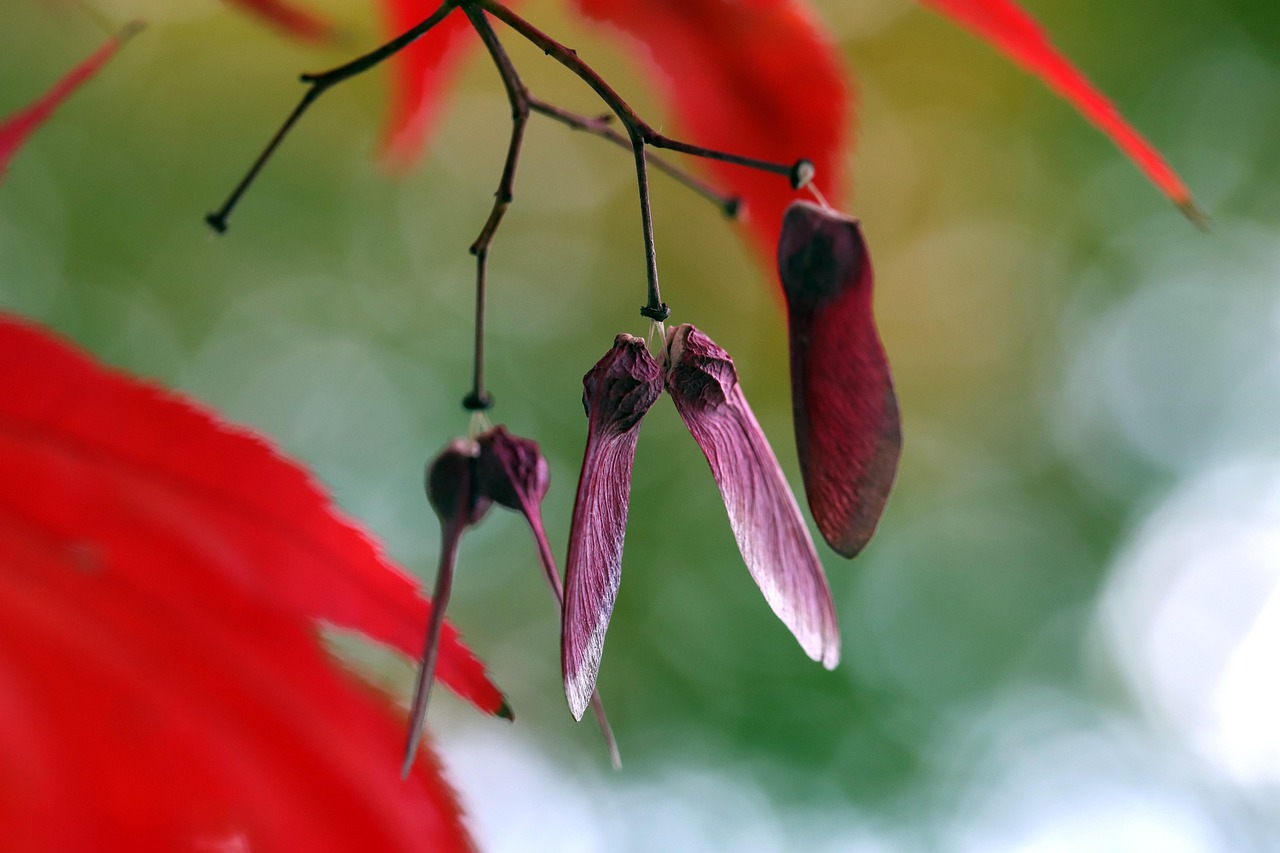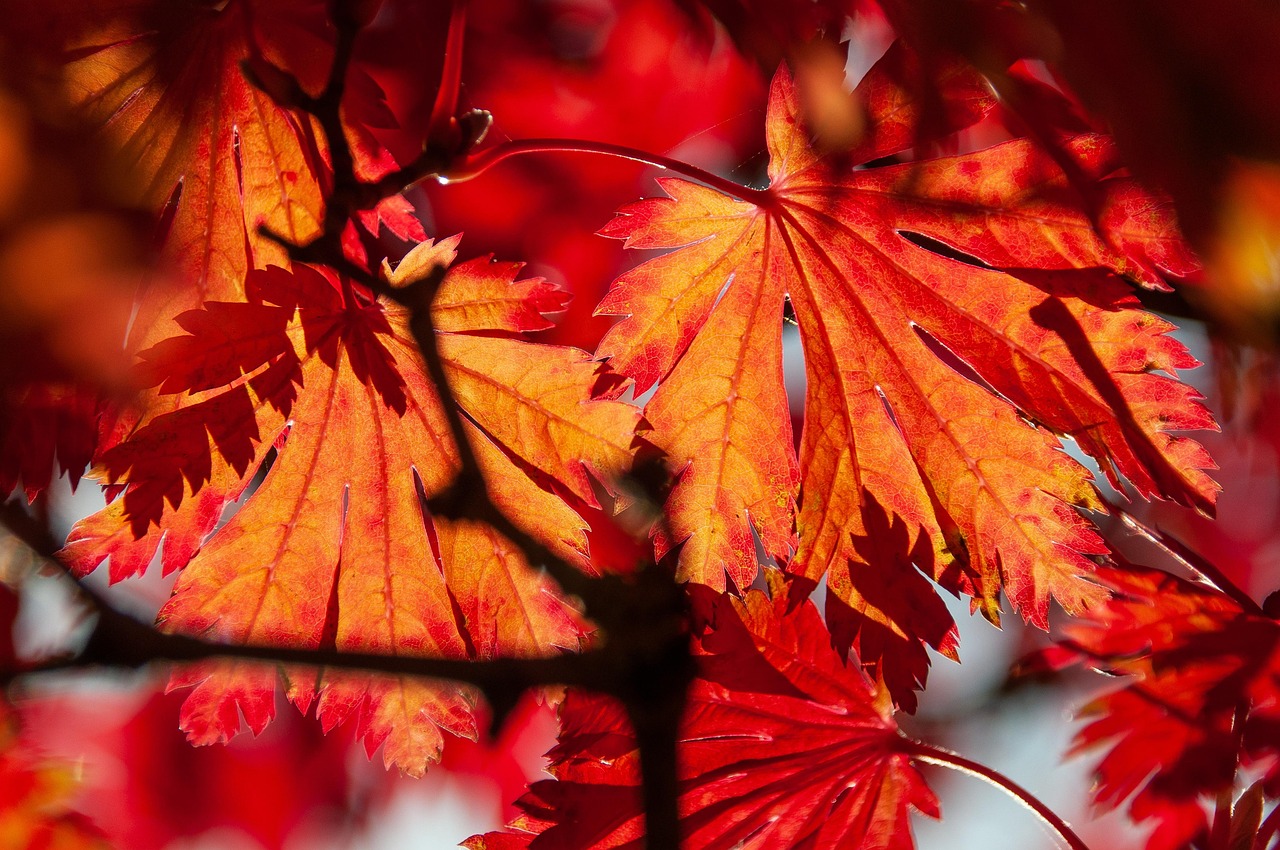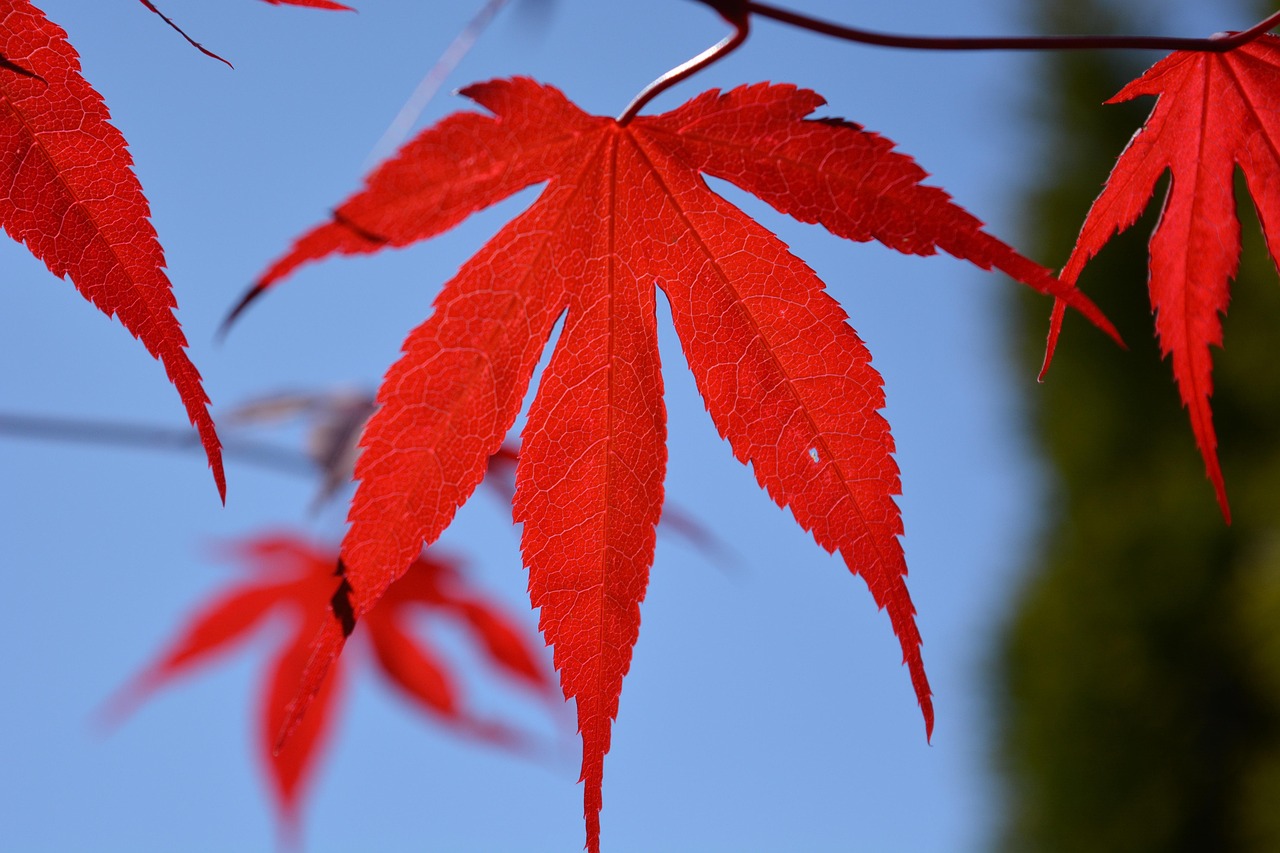Pruning young maple trees is essential for promoting strong structural growth. Proper techniques help develop a sturdy framework, improve air circulation, and enhance light penetration, leading to healthier trees that can better withstand environmental stresses.
Maple trees are cherished for their vibrant foliage, especially during the fall season. Young maples can grow rapidly, making it important to establish a solid structure early on. Pruning at the right time and in the correct manner can significantly influence the tree’s health and longevity. When young maple trees are pruned properly, they are less likely to develop weak branches or other structural issues later in life.

Understanding the anatomy of a young maple tree is crucial for effective pruning. The main trunk, branches, and leaves all play important roles in the tree’s overall health. Young maples typically have a central leader, which is the primary upward-growing stem. It is vital to maintain this leader during the early years of growth.
Why Prune Young Maple Trees?
Pruning serves several important purposes for young maple trees. Here are some key benefits:
- Structural Improvement: Pruning helps shape the tree to develop a strong framework.
- Light and Air Penetration: Removing excess branches allows sunlight to reach all parts of the tree.
- Pest and Disease Management: It reduces overcrowding, which can lead to pest infestations and diseases.
- Encouraging Growth: Focuses the tree’s energy on developing fewer, stronger branches instead of many weak ones.
Additionally, the timing of pruning is critical. The best time to prune young maple trees is during late winter or early spring, just before new growth begins. This timing minimizes stress on the tree and allows it to heal quickly from cuts made during pruning.

Key Considerations for Pruning
Before starting the pruning process, consider the following factors:
- Age of the Tree: Younger trees require different techniques than older trees.
- Tools: Ensure you have appropriate tools like sharp pruners and loppers for clean cuts.
- Pruning Technique: Familiarize yourself with proper techniques to avoid damaging the tree.
Using the right tools is essential for effective pruning. Dull tools can create jagged cuts that may harm the tree. Here’s a brief overview of commonly used pruning tools:
| Tool | Purpose |
|---|---|
| Hand Pruners | Ideal for small branches up to ¾ inch in diameter. |
| Loppers | Used for larger branches, typically ¾ inch to 1½ inches in diameter. |
| Saws | Best for cutting larger limbs requiring more force. |
Pruning Techniques for Young Maples
There are several techniques to consider when pruning young maple trees. Each technique helps achieve different goals in promoting structural growth:

Crown Thinning
Crown thinning involves selectively removing branches to improve light penetration and air circulation within the canopy. This technique helps prevent overcrowding and encourages healthy growth patterns. When thinning, focus on removing branches that cross over each other or those that are growing inward towards the center of the tree.
Crown Raising
Crown raising targets the lower branches of the tree. By removing lower branches, you allow more light to reach the ground and promote better growth of grass or other plants beneath the maple. This technique also reduces competition for nutrients and water.
Crown Reduction
Crown reduction is used when a tree becomes too tall or wide. This technique involves shortening branches back to a lateral branch that can support new growth. It is essential to avoid cutting back to bare branches, as this can lead to dieback.

Removing Dead or Diseased Wood
Regularly inspect your young maple trees for dead or diseased wood. These branches should be removed promptly to prevent any spread of disease to healthy parts of the tree. Cutting these away encourages overall health and vitality.
Implementing these pruning techniques will help you maintain healthy young maple trees. As they continue to grow, regular maintenance will ensure they develop strong structures capable of withstanding environmental challenges.
Timing and Frequency of Pruning
The timing of pruning is crucial for the health of young maple trees. Understanding when to prune can greatly influence the growth and structure of the tree. Proper timing reduces the risk of injury and promotes quicker healing.
Optimal Pruning Seasons
There are two main seasons when pruning can be effectively carried out:
- Late Winter to Early Spring: This is generally the best time for pruning young maples. During this period, trees are still dormant, and the risk of sap bleeding is minimal. Pruning during this time encourages vigorous growth as the tree awakens in spring.
- Late Summer to Early Fall: This period is also appropriate for light pruning after the tree has matured for the season. It is essential to avoid heavy pruning at this time, as this can stress the tree before winter.
Understanding these seasons helps ensure that young maple trees thrive and establish a robust structure.
Common Mistakes in Pruning Young Maples
Even experienced gardeners may make mistakes while pruning. Recognizing these common errors can help you avoid them:
- Over-Pruning: Removing too many branches can weaken the tree. Aim to prune only 20-30% of the tree’s canopy at one time.
- Improper Cuts: Making cuts too close to the trunk or leaving stubs can lead to decay. Always cut just outside the branch collar.
- Ignoring Tree Health: Failing to assess the tree’s overall health can lead to neglecting dead or diseased branches that need removal.
- Neglecting Safety Precautions: Using incorrect tools or not wearing protective gear during pruning can lead to injuries.
By being aware of these potential mistakes, you can take necessary precautions to ensure successful pruning sessions.
Tools Needed for Pruning
Using the right tools is essential for effective pruning. Here’s a list of essential tools along with their uses:
| Tool | Description |
|---|---|
| Bypass Pruners | Ideal for making clean cuts on small branches and stems. |
| Anvil Pruners | Great for cutting thicker branches but can crush stems if not used carefully. |
| Hand Saw | Used for larger branches that are too thick for pruners. |
| Lopper | A great tool for reaching higher or thicker branches without climbing. |
| Pole Saw | Allows you to reach high branches without a ladder, providing extra safety. |
Ensuring that your tools are sharp and well-maintained will enhance your efficiency during the pruning process.
Post-Pruning Care
After pruning, it is important to care for your young maple trees to support recovery and growth. Here are some tips for post-pruning care:
- Watering: Ensure the tree receives adequate water, especially during dry spells. This helps reduce stress and promotes new growth.
- Mulching: Apply a layer of mulch around the base of the tree to retain moisture and suppress weeds. Be cautious not to pile mulch against the trunk.
- Pest Monitoring: Keep an eye out for pests and diseases after pruning, as open cuts can attract unwanted insects.
- Nutrient Supply: Consider applying a balanced fertilizer in early spring to support new growth, but avoid over-fertilizing.
Caring for your young maple trees post-pruning will help ensure they remain healthy and robust as they grow.
Signs of Healthy Structural Growth
Recognizing the signs of healthy structural growth in young maple trees is essential for ongoing care. Here are some indicators to look for:
- Strong Central Leader: A healthy maple will have a well-defined central leader that grows straight upward.
- Straight Branches: The branches should grow evenly spaced around the trunk, forming a balanced canopy.
- No Crossing Branches: Healthy trees show minimal crossing or rubbing branches, which helps prevent injury and disease.
- Vibrant Foliage: Leaves should appear healthy, bright green, and free from discoloration or spots.
Monitoring these signs will help you assess the success of your pruning efforts and overall tree health. With proper care and attention, your young maple trees will thrive and grow strong.
Understanding Maple Tree Varieties
Before undertaking the pruning of young maple trees, it is important to understand the different varieties of maple trees and their specific growth characteristics. This knowledge can help tailor pruning techniques to each type, maximizing structural growth.
Common Maple Varieties
Here are some of the most common maple varieties found in gardens and landscapes:
- Sugar Maple (Acer saccharum): Known for its beautiful fall color and sap production, this tree has a strong central leader and dense canopy.
- Red Maple (Acer rubrum): Fast-growing and adaptable, red maples feature a more open structure and vibrant red foliage in the fall.
- Silver Maple (Acer saccharinum): This variety grows quickly and has a broad, spreading form. It may require more frequent pruning due to its weaker branches.
- Japanese Maple (Acer palmatum): Known for its ornamental beauty, this smaller tree requires careful pruning to maintain its shape and health.
Recognizing the specific characteristics of each variety allows for better decision-making regarding pruning strategies.
Pruning Techniques Specific to Varieties
Different maple varieties may require tailored pruning techniques. Here are some recommendations based on the type of maple:
Sugar Maple Pruning
Sugar maples benefit from strong structural pruning. Focus on:
- Maintaining a single leader to support upward growth.
- Thinning out crowded branches to improve sunlight penetration.
- Removing any dead or diseased wood annually.
Red Maple Pruning
Red maples may require slightly more aggressive pruning due to their rapid growth. Consider the following:
- Encouraging a balanced canopy by selectively removing branches that grow inward.
- Maintaining distance between branches to prevent overcrowding.
- Pruning in early spring before new growth begins for optimal results.
Silver Maple Pruning
The silver maple often has weaker wood, making it essential to prune carefully:
- Focus on removing weak branches that may break easily.
- Consider crown thinning to reduce wind resistance and enhance tree stability.
- Regularly inspect for any signs of disease, especially in crowded areas.
Japanese Maple Pruning
This ornamental tree requires delicate handling:
- Aim to maintain its natural shape while selectively removing branches that cross over one another.
- Prune lightly to avoid shock, focusing on aesthetic shaping rather than heavy thinning.
- Perform detailed inspections for pests or diseases, as these can affect its delicate structure.
Pest and Disease Management
A healthy tree is less susceptible to pests and diseases. However, young maple trees can still face various threats. Regular monitoring and management practices can help protect them:
Common Pests Affecting Maple Trees
Be aware of these common pests that may target young maples:
- Aphids: Small insects that suck sap from leaves, causing curling and yellowing.
- Scale Insects: These pests attach themselves to stems and leaves, weakening the tree.
- Maple Borers: Larvae that tunnel into the tree, causing significant damage if not addressed.
Disease Prevention Strategies
Implementing certain strategies can help minimize the risk of diseases:
- Proper Pruning: Ensure good air circulation within the canopy to prevent fungal diseases.
- Cleansing Tools: Disinfect tools before and after use to avoid spreading pathogens.
- Pest Control: Use organic insecticides or introduce natural predators to manage pest populations effectively.
The Role of Fertilization in Growth
Adequate nutrition is vital for young maple trees. Fertilization supports healthy growth and enhances resilience against pests and diseases. Here are some considerations:
When to Fertilize
The best times to fertilize young maples are in early spring before new growth begins and again in late summer. This timing promotes vigorous growth during the growing season.
Fertilizer Types
Selecting the right fertilizer ensures that young maples receive necessary nutrients:
- Slow-release fertilizers: Provide a steady supply of nutrients over time, reducing the risk of over-fertilization.
- Biodynamic fertilizers: Organic options that enrich the soil and promote healthy microbial activity.
Nutrient Needs
Younger trees typically require a balanced fertilizer with equal parts nitrogen, phosphorus, and potassium. A ratio such as 10-10-10 can be beneficial. Additionally, consider micronutrients such as magnesium, iron, and manganese for overall health.
Proper fertilization along with appropriate pruning techniques will greatly enhance the growth and structure of young maple trees. By understanding the specific needs of different varieties and implementing effective care strategies, you can help ensure their long-term health and vitality.
Additional Considerations for Young Maple Tree Care
In addition to pruning and fertilization, there are other factors to consider when caring for young maple trees. These aspects can significantly influence their growth and development.
Soil Quality and Preparation
The soil in which young maples are planted plays a crucial role in their establishment and growth. Here are some tips for ensuring optimal soil conditions:
- Soil Testing: Conduct a soil test to determine pH levels and nutrient content. Maple trees thrive in slightly acidic to neutral soils (pH 6.0 to 7.0).
- Amendments: Based on soil test results, consider adding organic matter such as compost or peat moss to improve soil structure and fertility.
- Drainage: Ensure that the planting site has good drainage. Maples do not tolerate waterlogged conditions, which can lead to root rot.
Watering Practices
Proper watering is essential for young maple trees, especially during their first few years of establishment:
- Deep Watering: Water deeply to encourage deep root growth. Aim for about 1 to 2 inches of water per week, depending on weather conditions.
- Mulching: Apply a layer of mulch around the base of the tree to retain moisture, regulate soil temperature, and suppress weeds.
- Monitoring: Regularly check the soil moisture level. The top inch of soil should be dry before watering again.
Seasonal Care
Adapting care practices with the changing seasons can help young maples thrive:
- Spring: Focus on pruning, fertilizing, and ensuring adequate water supply as new growth begins.
- Summer: Monitor for pests and diseases, and maintain consistent watering, especially during hot, dry spells.
- Fall: Prepare trees for winter by checking for damage and applying mulch to insulate roots.
- winter: Protect young trees from extreme weather conditions, particularly in areas with heavy snowfall or ice.
Final Thoughts
Caring for young maple trees through proper pruning, fertilization, and overall maintenance is essential for establishing strong structural growth. By understanding the specific needs of different maple varieties and implementing effective strategies, you can ensure that these beautiful trees thrive in your landscape.
The process of pruning young maples not only shapes their growth but also enhances their resilience against pests and diseases. Regular monitoring of tree health, along with timely interventions, can significantly impact their long-term success.
In conclusion, taking a comprehensive approach to young maple tree care will yield rewarding results. By investing time and effort into understanding their growth patterns and requirements, you will contribute to the beauty and vitality of your landscape for years to come. With the right techniques in place, your young maple trees will flourish, providing shade, beauty, and enjoyment for generations.
